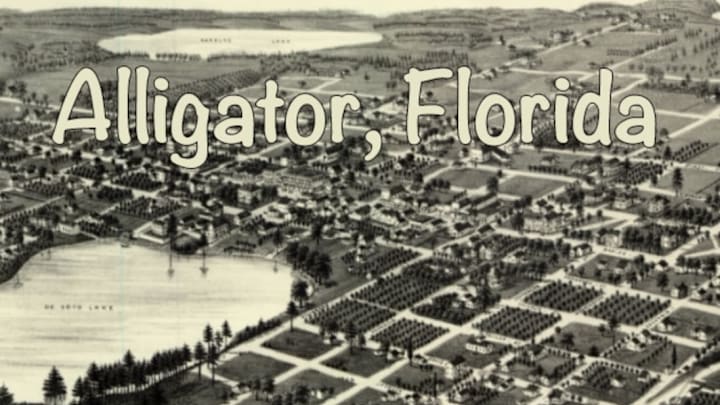It’s well known that New York was originally a Dutch colony named New Amsterdam. Less well known is the fact that, at the height of the Third Anglo-Dutch War, a fleet of two dozen Dutch ships sailed into the harbor and briefly retook control of the city from the British—so that for a short time starting in 1673, it was officially named New Orange.
But New York isn’t alone in changing its name (or rather, having its name forcibly changed), as these stories from all across the U.S. prove. While some of these monikers were actually in use for a short time, none—fortunately—became permanent.
1. Last Chance, Montana
In 1864, a group of prospectors known as the “Four Georgians” discovered gold in a remote gulch in Montana Territory. The discovery led to the establishment of a small mining camp in the area, which became informally known as “Last Chance.” Within a year, the camp had become home to several hundred people, a handful of representatives of whom met in September 1864 to formalize the town’s name and administration. Given that the meeting took place in the fall, one of the names under consideration was “Squash Town”—but luckily for the citizens of what is now Helena, the state capital of Montana, a name honoring Helena in Arkansas (or Helena in Minnesota, depending on whose side of the story you’re on) was chosen instead.
2. Pig’s Eye, Minnesota
A defensive fort named Fort Saint Anthony, and later Fort Snelling, was established at the confluence of the Mississippi and Minnesota rivers in 1819. Attracted by the safety and protection that the fort provided, an impromptu village soon emerged around it—including a local tavern run by and named after a retired fur-trader named Pierre “Pig’s-Eye” Parrant. The settlement itself soon took on the Pig’s-Eye nickname too, but luckily that name wasn’t to last. In 1841, a French Catholic minister named Father Lucien Galtier established a chapel dedicated to Paul the Apostle on the banks of the Mississippi nearby, and by the time the capital of Minnesota Territory was appointed in 1849, the town too had been given the name of St. Paul.
3. Swilling’s Mill, Arizona
In 1867, a man named Jack Swilling noticed the potential for farming a vast dry plain at the foot of the White Tank Mountains in central Arizona. After founding his own irrigation company, Swilling returned to the area to begin digging a canal to divert water from the Salt River into the White Tank valley; the following year, the handful of farms and homesteads that had emerged in the informal town of “Swilling’s Mill” successfully produced their first few meager crops. As the town continued to grow, one of its settlers, Darrell Duppa, suggested naming it after the legendary phoenix bird, representing a settlement springing from the ruins of a former civilization—and Phoenix, Arizona, was born.
4. Cleaveland, Ohio
Cleveland, Ohio, was named after Connecticut-born lawyer and surveyor Moses Cleaveland, who founded the city while surveying the great Connecticut Western Reserve in 1796. According to local legend, the a was dropped from Cleaveland in the early 1800s so that the name of the town could fit on the front page of the local newspaper.
5. Alligator, Florida
Lake City, Florida, was originally a Seminole settlement named Alpata Telophka, or “Alligator Village,” and that name remained in place after the area was colonized by European-American settlers in the early 1800s. The town name was changed in 1859—reportedly when the wife of a local politician, James McNair Baker, refused to hang her lace curtains unless the town changed its name to anything but Alligator.
6. Waterloo, Texas
In the 1830s, a village was established at the confluence of the Colorado River and Shoal Creek in what is now Texas, and was—for reasons unknown—given the name Waterloo. In 1839, after Texas had gained its independence from Mexico, the president of the Republic of Texas, Mirabeau B. Lamar, decreed that the capital should be relocated to Waterloo because of its visually pleasing location and abundant natural resources. The land was purchased by the state and the capital was officially relocated—and in the process Waterloo was renamed in honor of the “founder of Texas,” Stephen F. Austin.
7. Alburquerque, New Mexico
New Mexico’s most populous city was named after Francisco Fernandez de la Cueva, the 8th Duke of Alburquerque, a town in Spain on the Portuguese border. When the name’s first letter r disappeared to is a mystery—although local legend would have you believe it all began when the name was misspelled on a local railway sign in 1880.
8. Cross Keys, Pennsylvania
The town of Cross Keys was founded in 1754 and reportedly took its name from that of a local tavern. In 1814, the village—which stands in the heart of the Amish community in southern Pennsylvania—was perhaps looking to distance itself from its association with liquor when it chose a much less controversial name: Intercourse. Why the town chose this new name is unclear, with different explanations pointing to everything from the nearby entrance to a local race course to the former use of the word intercourse to mean “community” or “togetherness.” Either way, the name helped to make the town sign one of America’s most frequently stolen.
A version of this story ran in 2017; it has been updated for 2022. An error regarding the location of Ft. Snelling was corrected: It is located at the confluence of the Mississippi and Minnesota Rivers, not the Mississippi and Missouri rivers.
